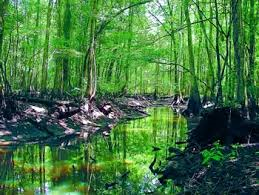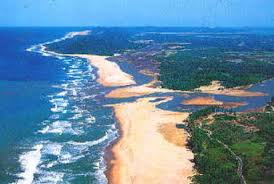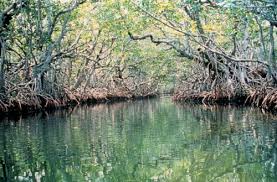Overview
Wetlands are ecosystems where the land is covered by water or near water. The water may be standing or flowing slowly, or the soil may be moist enough for at least part of the year that wetland plants and animals use it as their habitat. The salt content of the water is important to the types of creatures that live there.
Freshwater Bogs
Bogs are mires that are usually formed in colder climates, such as large areas of lowland Siberia, northern Europe, Canada, Scotland, and Ireland. They are very productive habitats for many types of creatures, so many of them are protected and conserved. Thick peat moss grows in acidic water, which is often harvested for fuel. Many other types of plants and insects are found around bogs.
Freshwater Marshes and Swamps
Marshes and swamps are usually very close to rivers. The types of plants, wildlife, fish, and amphibians that live there require a very moist environment to survive. Water flows slowly and percolates through swamps, bringing rich nutrients to the trees and shrubs that grow in them. For example, swamps such as the Everglades in Florida are home to many types of sawgrass, turtles, fish, alligators, and other wildlife.
Estuaries
Estuaries occur near bodies of saltwater, especially in places near the mouth of a river that opens into the sea. Besides the parts of the Everglades where rivers drain into the Atlantic Ocean and the Gulf of Mexico, estuaries form unique environments where rivers flow into the salt water of Puget Sound. The mouth of the Columbia River system at Astoria, where the river meets the Pacific Ocean, is another estuary. They are productive habitats for waterfowl, as well as spawning grounds for many types of fish and shellfish that live in deeper waters when they mature.
Salt Marshes and Mangrove Swamps
Salt marshes and mangrove swamps provide places for fish and crustaceans to grow and thrive. Salt marshes are found in many temperate zones, especially around bays. Many of the areas from Maine south to Georgia contain salt marshes. Mangrove swamps are more typical of tropical and subtropical regions, such as the Everglades and Hawaii. The mangrove swamps in the Everglades are home to several different species of mangrove trees. The mangrove trees provide food and shelter to shrimp and other invertebrates, which provide food for larger fish and other mammals. The habitats and ecosystems of Hawaii contain many species which are found nowhere else. Many Native Hawaiians respect and attempt to preserve them as part of their culture.
Interested in biology tutoring services? Learn more about how we are assisting thousands of students each academic year.
SchoolTutoring Academy is the premier educational services company for K-12 and college students. We offer tutoring programs for students in K-12, AP classes, and college. To learn more about how we help parents and students in Kissimmee, FL: visit: Tutoring in Kissimmee, FL




